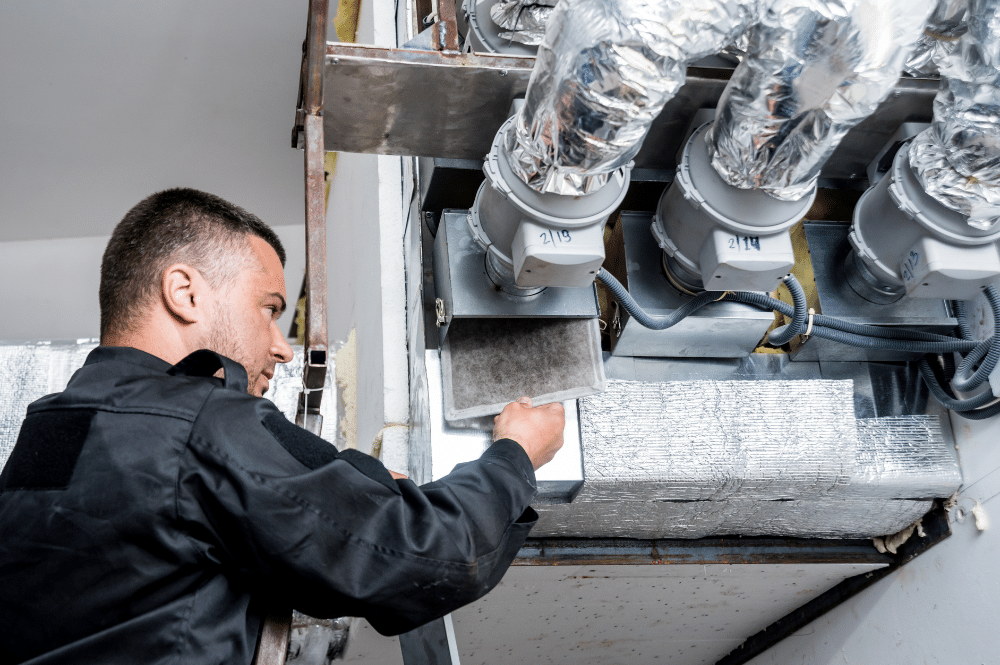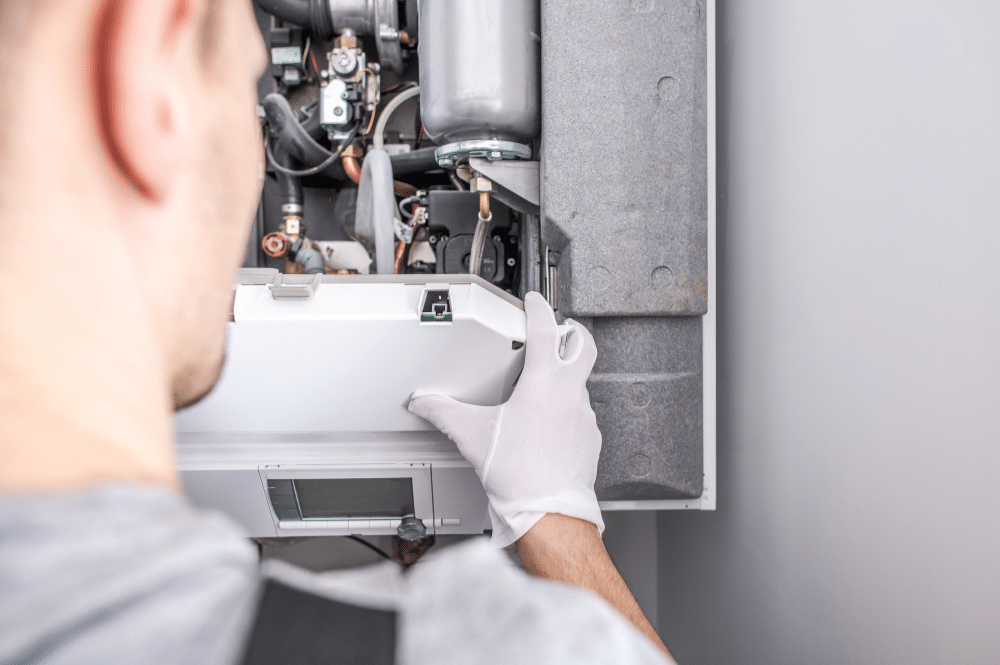The condenser in HVAC systems is the large metal housing located outside the house, and it’s not uncommon for homeowners to be confused about how it works to keep them cool. It may seem like little more than a glorified fan, but the condenser is arguably the most crucial component of a functioning A/C.
If you live in Austin, you know exactly how important it is to keep your air conditioning unit running efficiently. This article will show you why your condenser deserves your appreciation and attention if you want to beat the Texas heat.
What Is the Purpose of the Condenser in HVAC Units?
There are four essential parts to a central air conditioning unit — the evaporator coils, condenser coils, compressor, and expansion valve. Running between everything is a long line of copper tubing full of refrigerant.
Cooling starts at the evaporator, where copper coils holding liquid refrigerant cool the air coming in from the house. A heat exchange process occurs. As warm household air passes over the evaporator coils, the refrigerant absorbs the heat and turns to gas.
The air blower, which pulled the warm air from the house, then pushes the now cooled and dehumidified air back into the house. The warm refrigerant, meanwhile, moves to the condenser unit, where several important steps take place.
How the Condenser Works
The refrigerant flows to the compressor, the heart of the HVAC system. The motorized compressor has two jobs — it pumps the refrigerant through the system, and it pressurizes the gas refrigerant to make it even hotter. Getting the refrigerant as hot as possible is crucial for the next step.
The hot high-pressure gas moves to the condenser coils, which act as the inverse of the evaporator coils. Heat goes into the evaporator coils, and it exits through the condenser coils.
The hot high-pressure refrigerant releases heat into the outside air through another heat transfer process. There are a couple of features to help the condenser coils release the most heat possible.
First, when your A/C turns on, you’ll see the outdoor fan whirring along, passing air over the condenser coils to help them cool faster. Second, a series of thin aluminum sheets called “fins” are attached to the coils. The condenser conducts and disperses heat across the fins, increasing the amount of hot surface area and releasing more heat.
When the heat is gone, the refrigerant turns back to a liquid and moves to the expansion valve. Here, the valve releases pressure and the refrigerant gets even colder. It’s now ready to go back into the evaporator coils and start the cooling process all over.
What Are Common Condenser Problems?
When a condenser fails, it will either not release enough heat, or the refrigerant won’t be pressurized and pumped. If heat isn’t released, the refrigerant won’t be cold enough once it enters the evaporator. If pressure isn’t added, the expansion valve can’t release pressure to further reduce the temperature.
In both cases, a faulty condenser means warm air is entering your house.
Between a hardworking compressor, a powerful fan, and fragile condenser fins, there are plenty of places that a condenser unit can fail. Here are some of the common problems you might face with a condenser in HVAC systems.
Damaged or Blocked Fins
The fins need to be straight and clean in order for a smooth heat transfer to happen. Since the condenser is outside, it’s common for grime and dirt to build up on condenser coils. The buildup acts as an insulator, blocking certain sections from releasing heat.
When the fins are dented, the heat stays trapped in the unit. Your system will be less efficient with damaged coils, and it will have to work harder to keep the house cool.
Faulty Fan
A fan can stop working for several reasons. The motor can go bad, the belt can get worn, electrical issues can pop up, or the condenser’s capacitor might fail.
When it goes bad, you might hear some clicking from the fan when the A/C comes on. Everything will work like normal, but you’ll notice two things — the fan isn’t turning and the air coming into your house is warm.
For most component failures, you’ll want to call an air conditioning service company. A broken capacitor, however, might be something you can fix yourself for under $100.
The capacitor is a large battery-like cylinder that stores energy to kickstart your fan. If your fan doesn’t start running, you can do a simple test to see if your capacitor needs a replacement.
Take a stick and tap the fan blades when the A/C is on. If it starts spinning without an issue, then the capacitor is bad. You can follow the manufacturer’s instructions to order the correct part number and replace it.
Compressor Problems
The compressor is the most critical component of the condenser. HVAC systems rely on the compressor motor to power the system that keeps cool air flowing.
Over time, you might notice your motor stutters on startup or fails to power on at all. If you have issues with your compressor, you’ll need to call a technician for immediate repair or replacement. In many cases, a worn compressor indicates you need a new air conditioning installation.
How to Maintain Your Condenser
You can do several annual tasks to keep your condenser working efficiently. As part of your springtime A/C checklist, make sure you clear at least 18 inches of space around your condenser. Brush, leaves, and growing plants can block heat from escaping to the outside air.
Turn your A/C off, and clean the condenser coils. Use a brush to dislodge any debris, and then hose down the coils to wash away loosened dirt and grime. If you have any bent fins, you can use a fin comb to straighten them out.
Schedule Air Conditioning Service to Protect Your Condenser
The best way to protect the condenser in HVAC units, improve its efficiency, and extend its life is to schedule annual maintenance. Air conditioning companies can tune up components and inspect for minor problems. With their help, you can save yourself from costly repairs and inconvenient system failures.
Our certified team of technicians at Schneider Mechanical is here to help Austin residents get the most enjoyment out of their HVAC systems. Contact us to learn how we help our customers save money and time with our premium maintenance service.




